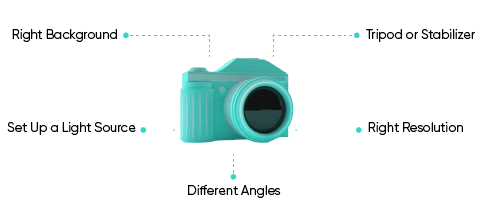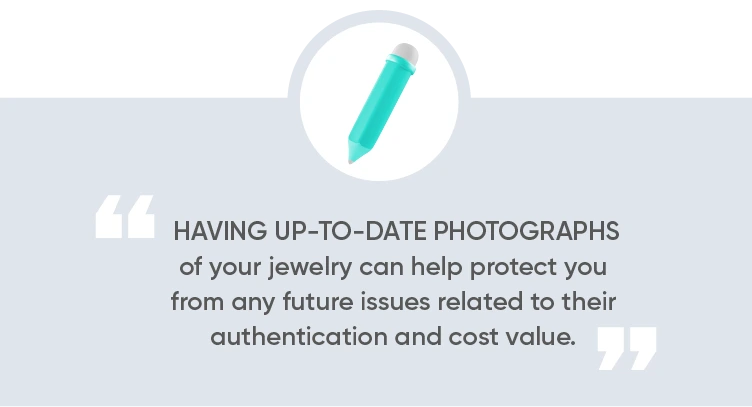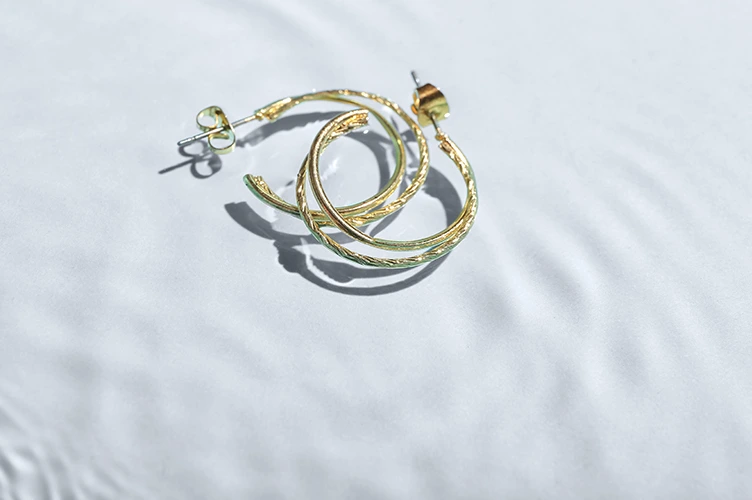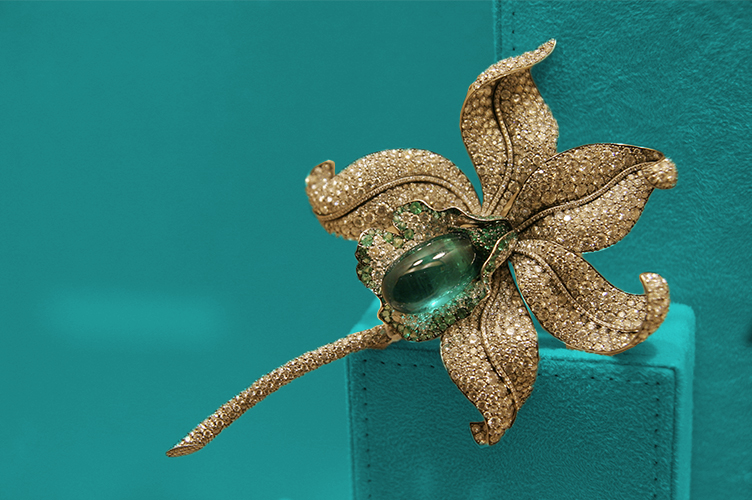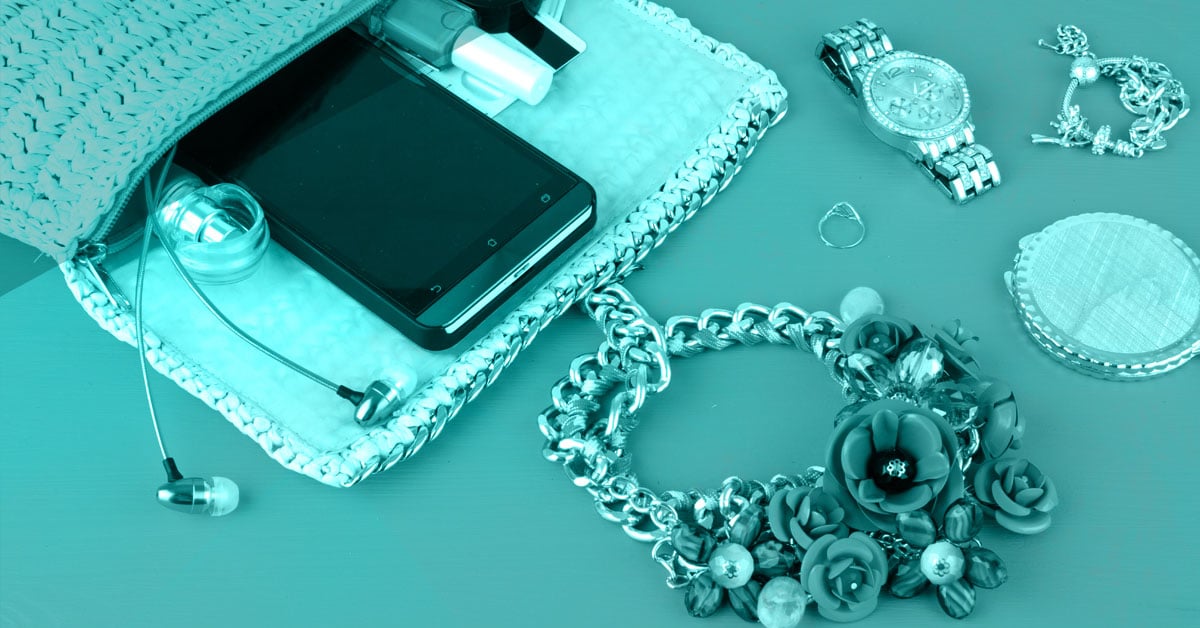Your heirloom pieces, engagement ring, and high-value jewelry collection are worth protecting. Capturing your precious jewelry on film can mean the difference between an insurance claim being approved or rejected. To ensure proper coverage, you must know how to capture those special pieces from multiple angles and settings.
From equipment selection, positioning for best results, and practicing different settings, learn how proper photo documentation can help when it comes time to file a claim.
What You Will Learn
Why Do I Need to Take Photos of My Jewelry?
Taking photos of your jewelry is essential to document the pieces you own and accurately track their condition. This provides valuable additional information in case you ever need to make an insurance claim.
It is especially important when it comes to high-value items like diamonds, gems, and collectibles, as they need to be assessed before an appraisal and insurance coverage can be granted. Having up-to-date photographs of your jewelry can help protect you from any future issues related to their authentication and cost value.
How to Photograph Jewelry for Insurance Purposes: Step-by-Step Guide
Now that you know why taking pictures of your jewelry is necessary, let’s break down the steps to take when photographing your jewelry for insurance:
-
Clean Your Jewelry
Before taking pictures of your jewelry, use a microfiber cloth or soft brush to remove any dust and debris. Clean with mild dish soap and water if the jewelry is particularly dirty.
Dry the piece off after cleaning, as water droplets can show up in photos and distort the look of your jewelry.
-
Choose the Right Background
Choosing the right background is essential for proper documentation. A white background provides a neutral base that clearly shows color tones and design details.
But setting up an even, clean white background can be tricky – try using a DIY lightbox or some large pieces of copy paper as a backdrop. Make sure there are no wrinkles or creases in the paper, as this will distract from your jewelry piece in the photo.
-
Use a Tripod or Stabilizer
Using either a tripod or stabilizer is necessary when photographing jewelry to prevent blurry images because of camera shake while shooting for long periods or at high magnification levels.
For sharper photos, set your equipment up on a sturdy table or surface and select either shutter speed priority mode (S) or Manual (M) mode on your DSLR camera before taking each shot to ensure clear images every time.
-
Set Up a Light Source
The best practice is using soft, diffuse lighting, which provides more detail and reduces glare. This can be achieved by setting up a few lamps around the piece, ensuring the light is dispersed across the entire object.
Ensure the lights are not directly above or below the jewelry, as this can create unwanted shadows.
-
Choose the Right Resolution
To choose the right photo resolution, aim for no less than 300 dpi (dots per inch). Higher resolution ensures that all details are captured clearly and accurately.
Higher resolutions result in larger file sizes, but this is often worth it for insurance policy applications like jewelry photography, which require high levels of detail.
-
Capture Photos From Different Angles
It’s important to capture photos from different angles when photographing jewelry for insurance purposes.
For example, an engagement ring may need four different shots (top view, side view, front view, and back view), whereas a necklace may only require two angles—front and side views—as there are fewer details on display compared to a ring or other piece of jewelry with intricate detailing.
When taking your photos, try to use natural lighting wherever possible and position your digital camera at eye level with your subject so that any imperfections will be highly visible in each image.
Keep Digital and Hard Copies
Once you have taken your picture, keep digital copies and hard copies of each photograph. Digital copies can be stored on an external hard drive or cloud storage solution, while printed versions should be kept in an insured, safe deposit box or other secure location away from any potential damage or theft.
This ensures that you have physical evidence of what your items looked like before any loss or damage occurred, which could impact their value at claim time. Digital copies are also easily shared with insurers when making claims, which can speed up the process.
Protect Your Jewelry With BriteCo™ Jewelry Insurance
Don’t let the loss, theft, or damage of your precious jewelry items cause you unnecessary worry. BriteCo™ provides comprehensive and affordable insurance coverage for your peace of mind. Plus, applying is a cinch – just answer some quick questions online.
BriteCo’s worldwide coverage limits are 125% of the appraisal value and include damage, theft, loss, and mysterious disappearance, so you can be confident that your valuable and sentimental pieces are protected.
Should something occur that requires filing a claim, take care of it in minutes with our convenient online platform. Get started now and protect your treasures today.
Also Check:
How Do I Insure My Camera Equipment? | BriteCo Jewelry Insurance
Video camera equipment insurance: Why you need it


